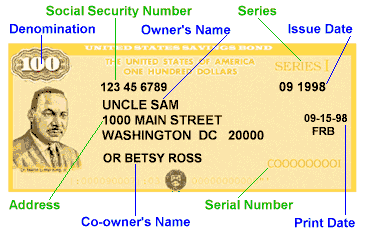What is an I Bond?
An I Bond is one of two types of savings bonds sold by the U.S. Treasury (the other is the EE Bond).
How Does an I Bond Work?
The U.S. Treasury has issued many different series of savings bonds over the years, but only I Bonds and EE Bonds are currently available for purchase.
I Bonds come in either paper or electronic form and can be purchased from most financial institutions or via the U.S. Treasury's TreasuryDirect website (www.treasurydirect.gov). U.S. citizens, official U.S. residents, and United States government employees (regardless of their citizenship status) can buy and own I Bonds.
I Bonds are sold at face value (i.e., a $100 bond costs $100). The minimum investment is $25, and investors who purchase I Bonds electronically can buy in any amount above $25. Investors can only purchase paper I Bonds in $50, $75, $100, $200, $500, $1,000, $5,000, and $10,000 increments. In either case, investors can purchase up to $30,000 worth in one year. Below are the basic components of a paper I Bond.

When an I Bond matures, the investor receives the face value of the bond plus accrued interest. I Bonds are not redeemable for the first 12 months they're outstanding, and investors who redeem within the first five years forfeit the last three months of interest as a penalty. Bondholders can redeem their electronic bonds (also called book-entry savings bonds) through the online TreasuryDirect service. Holders of paper bonds can redeem them at most financial institutions.
I Bonds are zero-coupon bonds; they earn interest monthly but do not pay that interest until they mature or are redeemed. The interest compounds semiannually.
I Bonds pay a fixed rate plus an inflation rate based on the CPI for Urban Consumers (CPI-U). The rate changes twice a year and offers some protection against inflation. This structure is what primarily distinguishes I Bonds from EE Bonds. The Bureau of Public Debt announces the bond rates in May and November.
Interest from I Bonds is exempt from state and local taxes, but is subject to federal tax in the year in which the bond matures or is redeemed. The holder may choose to pay taxes each year on the interest earned in that year, but the disadvantage to this is that the taxpayer must then pay taxes on accrued interest from any other investments as well.
Savings bond interest can be exempt from federal taxes if the investor redeems savings bonds and pays tuition for himself or a dependent in the same year under the Education Savings Bond Program.
Why Does an I Bond Matter?
I Bonds are simple and low-risk investments backed by the U.S. government. The state and local tax exemption, as well as the federal exemption for tuition payment, make I Bonds especially advantageous for investors in high tax brackets or those with college bound children. I Bonds are very liquid and they can be redeemed online or at nearly any financial institution (note: there is no secondary market for I Bonds, which means they cannot be traded among individual investors).
There are some serious disadvantages to investing in I Bonds. First and foremost, I Bonds have a very low rate of return relative to other types of investments. Furthermore, interest is taxed as ordinary income, rather than the lower capital gains tax. Finally, I Bonds may not be suitable for investors who wish to have a steady stream of income because the earnings can only be redeemed after the bonds have matured.



